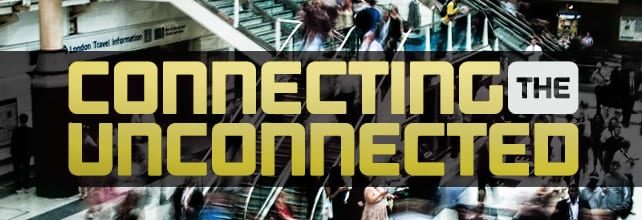NTIA Map Has Real but Limited Value
NTIA released an interactive mapping tool for journalists today that displays the digital divide in vivid color. The tool combines data from diverse sources, some reliable and some not. Its value is real but limited.
It doesn’t add anything to the broadband discourse that we didn’t already know, as the datasets aren’t new. The most meaningful data comes from the Census Bureau’s American Community Survey, a review of broadband subscriptions and computer ownership.
Unfortunately, the ACS data is pre-pandemic, dating from 2019. ACS is set to release an update in September, but NTIA seems to feel some urgency in making this tool available while the debate over broadband infrastructure is active.
Will This Map Help Policymakers?
The new wrinkle in this tool is the ability to highlight low-income census tracts with low rates of computer ownership and Internet subscription. Census tract level data is clean because it’s not polluted by the sources that mismeasure broadband speeds, M-Lab and Microsoft.
This feature highlights communities in which broadband is available but people are choosing not to sign up. These areas are targets for outreach by broadband adoption programs.
In rural and remote areas, outreach can be necessary at a door-to-door level because people are often not aware of subsidies, digital literacy training, and digital navigation help. With luck, organizations that focus on low-income adoption will find the tool useful for finding areas to explore.
Will This Map Help Journalists?
Overall, I suspect the Indicators of Broadband Needs tool will further confuse the digital divide debate by introducing bad data to a wider audience. The bad data comes from M-Lab and Microsoft.
M-Lab is the speed testing service created by Google in the early days of the net neutrality debate; it has since been taken over by public broadband advocates. It understates broadband speeds by one third by using an unrealistic number of test data streams.
Browsers download 8 to 16 data sources at the same time, but M-Lab’s tool, NDT, only measures one. This obviously doesn’t capture user experience.
Microsoft has never disclosed its methodology, but its results show speeds roughly half as fast as Ookla sees.
Beware of Agenda -Driven Data
When policy makers adopt the reality-based, data-driven approach to policy creation, data leads the way. This means data also becomes a battleground.
Monopoly capitalists like Google and Microsoft realize that data can make or break an argument because of their experience with market power cases. Firms can either be or not be dominant depending on how the market is defined.
Similarly, population groups can be either served or unserved depending on how we define areas of interest. At the ZIP Code level we all have access to broadband; at the household level some do and some don’t.
Will This Map Move the Infrastructure Debate Forward?
People love interactive maps. I’m a sucker for them myself, even though I know they’re mostly nonsense, little more than empty calories.
The first thing I do with one is zoom into my address. I’ve got a good idea about the broadband services available here, so this offers a quick reality check. My census tract gets median Ookla speeds of 109/11, has 97.4% computer ownership, and 96.7% broadband adoption according to NTIA.
This was probably accurate circa 2019, and it suggests we’re not a good target for adoption outreach or for infrastructure upgrades. We already knew that from the FCC’s Form 477 data, so it’s not the question this map answers.
The Value of the NTIA Map is Real but Limited
Indicators of Broadband Needs sheds light on low-income areas with limited broadband use. It doesn’t answer questions about how much money we need to spend on infrastructure, what speeds such spending should target, whether the providers should be public or private, and how such money should be spent.
It suggests, but doesn’t answer, questions about how to reach communities with limited interest or ability to use broadband services. It does this somewhat poorly not because it’s a bad map, but because the data that goes into it is already out of date.
The dubious data from M-Lab and Microsoft only goes down to the county level, so it’s not useful at all. NTIA would be well advised to drop these sources and focus on data that’s both accurate and actionable.
Fixing the Digital Divide
As we’ve pointed out, the so-called Digital Divide problem is two distinct issues pretending to be one. In unserved areas nobody can buy high quality broadband at any price.
This is a civil engineering problem that can only be solved by building networks. Congress loves this problem because its answer is to throw money around.
The larger digital divide problem is that for every one person who can’t buy broadband there are two unconnected people who could get it today if they had the means and the interest to do so. This is a social problem, the kind of thing Congress hates because it’s messy and complicated.
The social divide is the only question adequately addressed by the indicators of need map.
Fixing the Infrastructure Gap
Better mapping of the civil engineering problem is not urgently needed at the moment. There are plenty of census tracts with no facilities other than geosynchronous satellite that warrant immediate attention.
While we’re proceeding to fill this gap with wired, wireless, and low earth orbit satellite service, NTIA, FCC, and Census can collect information about households that would be willing to subscribe to new broadband services if they were available.
This data provides all the information needed by policy makers to proceed into the census tracts that are partially but not fully served. When we’ve done that, the subsidy money practically spends itself.



